The crawler-transporters, formally known as the Missile Crawler Transporter Facilities, are a pair of tracked vehicles used to transport spacecraft from NASA's Vehicle Assembly Building (VAB) along the Crawlerway to Launch Complex 39. They were originally used to transport the Saturn IB and Saturn V rockets during the Apollo, Skylab and Apollo-Soyuz programs. They were then used to transport Space Shuttles from 1981 to 2011. The crawler-transporters carry vehicles on the mobile platform launchers used by NASA, and after each launch return to the pad to take the platform back to the VAB.
1982
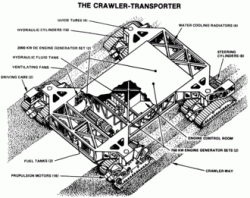
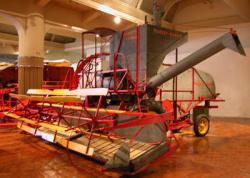
Designated A Historic Landmark Of Agricultural Engineering The Massey-Harris No. 20 was the First Commercially- Successful Self-Propelled Combine Used to Harvest Small Grains Under a Wide Variety of Conditions, World-Wide. Engineered By Thomas Carroll, Chief Engineer, Aided by Robert Ashton and Albert Luke, Principal Assistants, it was First Marketed in 1938 by the Massey-Harris Company. This Combine Opened a New Era an Farm Mechanization and Revolutionized the Grain Harvesting Process. Forty-Four Years Later, This Same Harvesting Principle Continues to be Used Throughout the World.
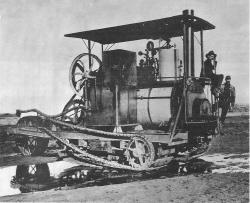
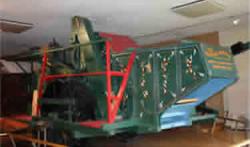
The Sidehill Combine Developed By The Holt Brothers At Stockton, California In 1891, A Significant Milestone In Grain Harvesting And Agricultural Efficiency That Opened New Land For Wheat Farming, Is Designated A Historic Landmark Of Agricultural Engineering By The American Society Of Agricultural Engineers 1982
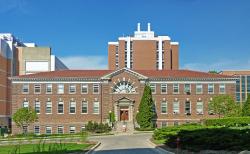
American Society of Agricultural Engineers Founded in this Building December 27, 1907
"Eads had to succeed in the face of conventional wisdom which doomed him to disaster. Entrenched authorities not only completely dismissed his theories, but pointed to the indifferent European experiences with what he proposed."
- ASCE Landmark Nomination Proposal, 1982
Smaller and cheaper than a triple-expansion vertical engine, the horizontal cross-compound pumping engine, Pump No. 2, ran at relatively slow revolutions and was considered the height of engineering from the 1890s to World War I. This pumping engine at the York Water Company was built by the Worthington Pump & Machinery Corporation, Snow-Holly Works, Buffalo, New York.
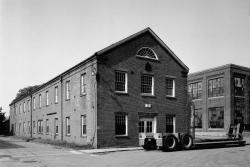
The Watertown Arsenal was the first major engineering testing laboratory in America. It was created to store and manufacture cutting-edge military technology and weaponry. The United States Army Research and Materials Laboratory continued to use the site until 1989, employing soldiers and civilians to produce and test artillery.
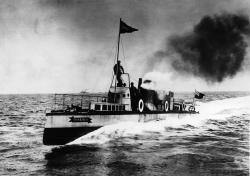
The Turbinia was the world's first turbine-driven ship. It attracted worldwide attention at the 1897 Spithead Naval Review by traveling more than 34 knots. This remarkable performance accelerated the acceptance of the steam turbine as an alternative to the steam reciprocating engine on ships as well as for central electric light and power stations. Sir Charles A. Parsons (1854-1931) invented (1884), developed, and promoted the steam turbine, as well as the design of the Turbinia. For this, he is considered among the outstanding technological innovators of all time.
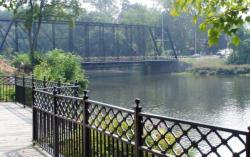
The Second Street Bridge is a simply ornamented, wrought-iron structure. It is 18 feet wide and spans 225 feet over the Kalamazoo River. It was built to replace a dilapidated wooden bridge that had served the area for nearly 50 years.
The bridge is anchored to fieldstone abutments on each shore, and the deck is composed of wood beams. Iron lattice work provides structural stability and iron finials on the end posts provide aesthetic appeal. It includes a wooden pedestrian walkway.
Innovations
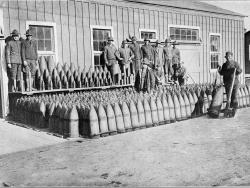
During the 1930's, research into advanced ballistic measurement techniques began at Aberdeen Proving Ground—the world's first large-scale, fully-instrumented ballistic range producing data on the aerodynamic characteristics of missiles in free flight.
Although this research had begun…
Read More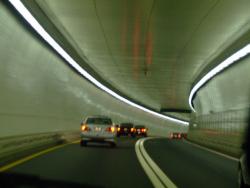
The 1.6-mile Holland Tunnel was the first underwater vehicular crossing of the Hudson River and the first tunnel specifically designed for automobiles and trucks. It dramatically reduced the time required to traverse the Hudson River, a trip previously possible only by ferry.
A major…
Read More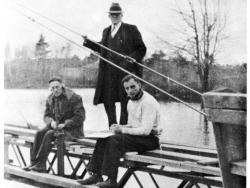
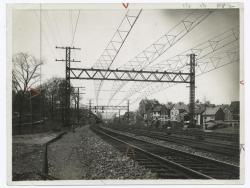
This was a pioneering venture in mainline railroad electrification. It established single-phase alternating current as a technical and economical alternative to direct current. This concept exerted considerable influence over subsequent systems both in the United States and abroad. The major…
Read More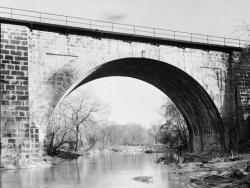
The Carrollton Viaduct over Gwynn's Falls was the first masonry railroad viaduct constructed in the United States. This structure proved the feasibility of using a viaduct to transport railway vehicles across wide and deep valleys.
The concept for the viaduct came from international…
Read More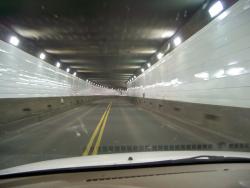
The Detroit-Windsor Tunnel is a 5,160-foot structure that carries traffic under the Detroit River between Detroit, Michigan and Ontario, Canada. Privately financed, built, and owned, it was completed in 26 months, 10 months ahead of schedule.
The project's engineer, the firm of…
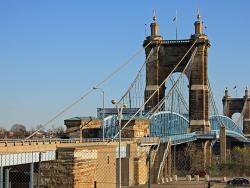
In 1866, the Covington and Cincinnati Suspension Bridge was the largest suspension bridge in the world. Also called the Ohio Bridge, it was officially renamed the John A. Roebling Bridge in 1983. It was the first permanent bridge over the Ohio River and the only public project in America…
Read More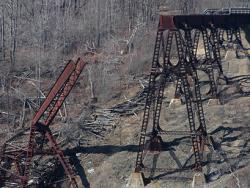
The workforce consisted of less than 100 men, yet they finished construction in just 94 days. Such speed was possible due to the elimination of scaffolding. Instead, iron rods were used to support construction of the trusses between the towers, and workers moved back and forth across the rods. A…
Read More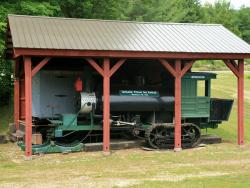
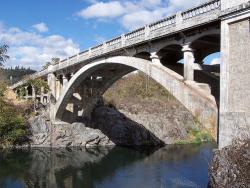
The Rogue River Bridge was the most advanced concrete bridge in America when it was built. Distinguished bridge engineer Conde McCullough employed the techniques of Frenchman Eugene Freyssinet to create thin, graceful concrete arches for this seven-span structure.
Pre-compression of the…
Read More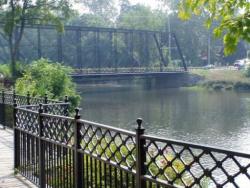
The Second Street Bridge is a simply ornamented, wrought-iron structure. It is 18 feet wide and spans 225 feet over the Kalamazoo River. It was built to replace a dilapidated wooden bridge that had served the area for nearly 50 years.
The bridge is anchored to fieldstone abutments on…
Read More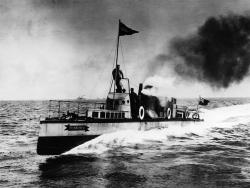
The Turbinia was the world's first turbine-driven ship. It attracted worldwide attention at the 1897 Spithead Naval Review by traveling more than 34 knots. This remarkable performance accelerated the acceptance of the steam turbine as an alternative to the steam reciprocating engine on ships as…
Read More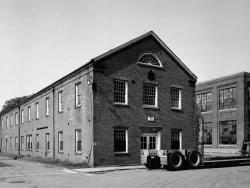
The Watertown Arsenal was the first major engineering testing laboratory in America. It was created to store and manufacture cutting-edge military technology and weaponry. The United States Army Research and Materials Laboratory continued to use the site until 1989, employing soldiers and…
Read MoreSmaller and cheaper than a triple-expansion vertical engine, the horizontal cross-compound pumping engine, Pump No. 2, ran at relatively slow revolutions and was considered the height of engineering from the 1890s to World War I. This pumping engine at the York Water Company was built by the…
Read More"Eads had to succeed in the face of conventional wisdom which doomed him to disaster. Entrenched authorities not only completely dismissed his theories, but pointed to the indifferent European experiences with what he proposed."
- ASCE Landmark Nomination Proposal, 1982
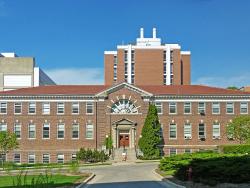
American Society of Agricultural Engineers Founded in this Building December 27, 1907
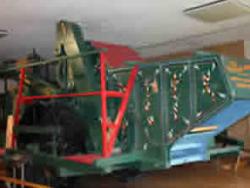
The Sidehill Combine Developed By The Holt Brothers At Stockton, California In 1891, A Significant Milestone In Grain Harvesting And Agricultural Efficiency That Opened New Land For Wheat Farming, Is Designated A Historic Landmark Of Agricultural Engineering By The American Society Of…
Read More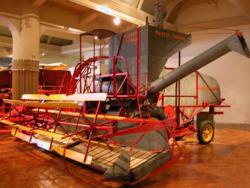
Designated A Historic Landmark Of Agricultural Engineering The Massey-Harris No. 20 was the First Commercially- Successful Self-Propelled Combine Used to Harvest Small Grains Under a Wide Variety of Conditions, World-Wide. Engineered By Thomas Carroll, Chief Engineer, Aided by Robert…
Read More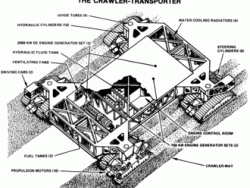
The crawler-transporters, formally known as the Missile Crawler Transporter Facilities, are a pair of tracked vehicles used to transport spacecraft from NASA's Vehicle Assembly Building (VAB) along the Crawlerway to Launch Complex 39. They were originally used to transport the Saturn IB and…
Read More


